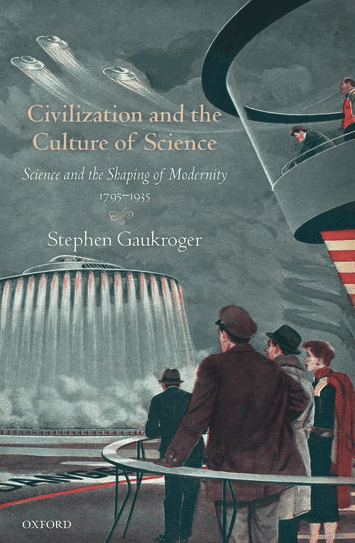Arpan K. Banerjee
Solihull, United Kingdom

Cover of Civilization and the Culture of Science: Science and the Shaping of Modernity, 1795–1935 by Stephen Gaukroger.
The word civilization has both Latin and French origins: civitas (city) and civis (citizen) in Latin, and civilise (civilized) in French. In 1923, physician, philosopher, and theologian Albert Schweitzer wrote in The Philosophy of Civilization that “Civilization was essentially the sum total of all progress made by man in every sphere of action and from every point of view including spiritual progress.”
Civilization is, of course, closely intertwined with culture, which essentially refers to the ideas, customs, rituals, beliefs, and manifestations of human intellectual endeavor within a particular people or society.
This is the fourth volume in the series Science and the Shaping of Modernity by Stephen Gaukroger, emeritus professor of the history of philosophy and science from the University of Sydney. Gaukroger analyzes how science came to have such a central role in Western culture. This volume focuses on the development of modern science from the late eighteenth century (1795) to the mid twentieth century (1935). Previous volumes have covered the medieval period and Middle Ages and the early modern era of scientific advancements.
The modern Scientific Revolution started in the seventeenth century and has continued, unabated, throughout subsequent centuries. By the nineteenth century, science became pivotal to the progress made by nations. This is exemplified by Arthur Balfour, the British prime minister, who in a 1905 address to the British Society for the Advancement of Science (founded in 1831) told the British public that the understanding of the modern world was now being revolutionized by science as it began to shape the standards of culture and civilization. At the same time, religious dogma was increasingly challenged by the growing numbers in educated classes.
This book, a work of formidable scholarship, sets about analyzing the place of science and scientific ideas in our modern society. The first section covers the concepts of science, the origins and evolution of civilization, and introduces the reader to the theories of August Comte and Herbert Spencer. We are reminded about the dominance of German science in the nineteenth century. A quote from Nietzsche begins the book, informing us that “what is meant by culture is essentially the promotion of science.”
The author takes us through a historical journey of the natural sciences, including physics, chemistry, and the material sciences. We are reminded of the experimental legacies of the brilliant scientists of the era such as Faraday, Maxwell, and Dalton to name only a few. Life sciences are also covered, including physiology, biology, Darwin, and evolution. In the third section, human behavior, psychology, and philosophy are discussed in relation to the new comprehension of the world. Herschel’s and Whewell’s philosophical metatheories of science (influenced by the philosophers Francis Bacon and Immanuel Kant) involved the ranking of different scientific disciplines, with physics at the apex of the scientific pyramid.
Technology and the role of science and scientific literacy are not given short shrift. There are even chapters on the science of the future and space science. The final section is an analysis of the civilizing process of science with accompanying essays on heredity and intelligence and an analysis of Francis Galton’s controversial contribution in these fields.
This is a remarkable work of scholarship and the fifty-page bibliography is a testament to the author’s breadth of knowledge and reading, which forms the scientific basis for his outstanding contribution to the field.
Civilization and the Culture of Science: Science and the Shaping of Modernity, 1795–1935
Stephen Gaukroger
Oxford University Press, 2022, ISBN 978019286628
DR. ARPAN K. BANERJEE qualified in medicine at St Thomas’s Hospital Medical School, London. He was a consultant radiologist in Birmingham 1995–2019. He was President of the radiology section of the RSM 2005–2007 and on the scientific committee of the Royal College of Radiologists 2012–2016. He was Chairman of the British Society for the History of Radiology 2012–2017. He is Chairman of ISHRAD. He is author/co-author of papers on a variety of clinical, radiological, and medical historical topics and seven books, including Classic Papers in Modern Diagnostic Radiology (2005) and The History of Radiology (OUP 2013).
Highlighted in Frontispiece Volume 14, Issue 3 – Summer 2022

Leave a Reply